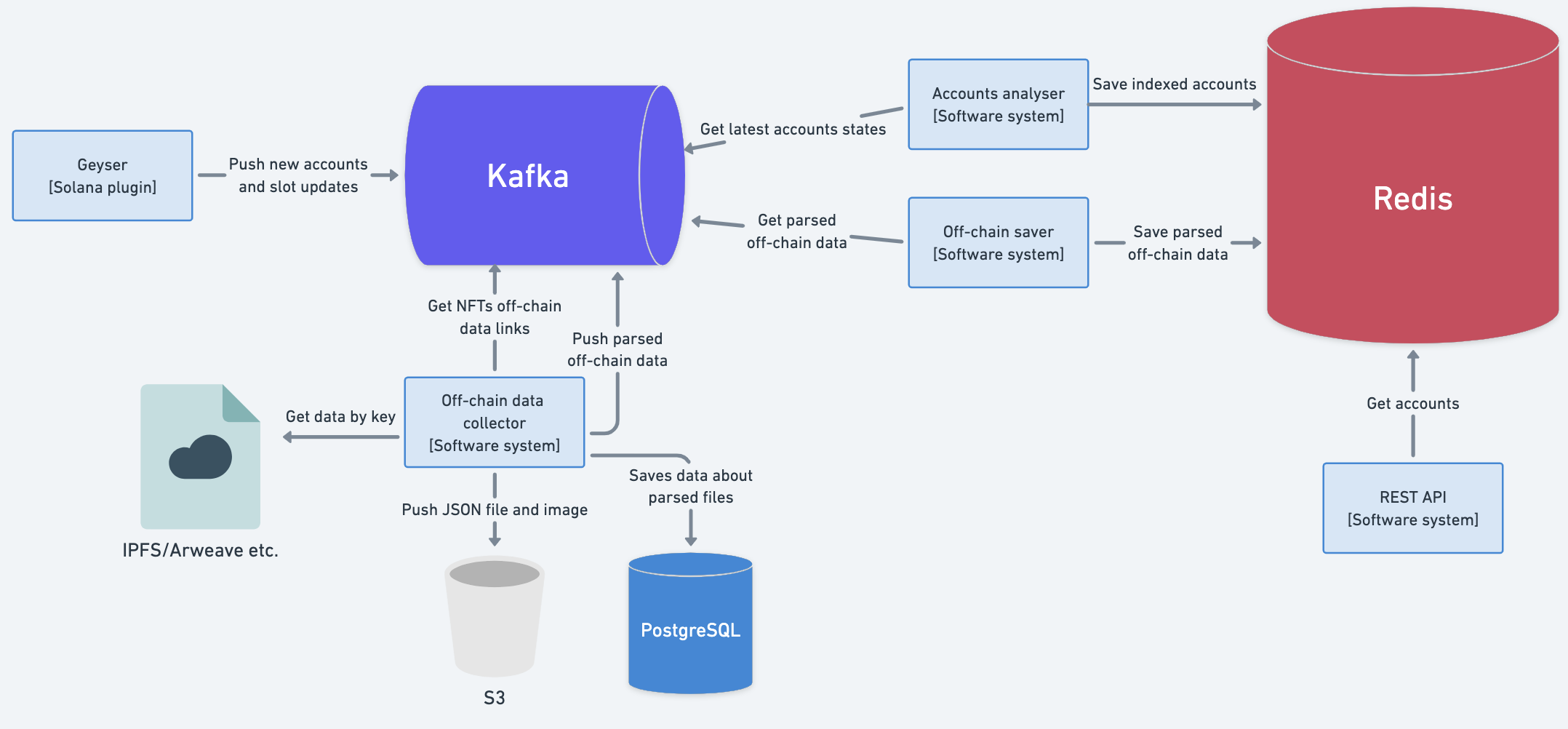Introduction
What is the Lollipop Protocol?
The Lollipop protocol is a cross chain protocol that allows different blockchains to pull account and transaction information from eachother.
Architecture

There are five main components to the architecture:
- Geyser
- Apache Kafka
- Account Analyzer
- Redis
- REST API
At a highlevel, Solana account data is pulled from a Geyser and sent to a Kafka instance. The Account Analyzer is an ETL that extracts the account data from Kafka, transforms it, and loads it into a Redis. The data in the Redis is then exposed via a Rest API.
Geyser
Geyser is Solana node plugin responsible for feeding Kafka with new account states. You can read more about it here
Kafka
Kafka is an open source message broker. It enables different components within a system to communicate with eachother by persisting and routing messages between components.
Account Analyzer
Accounts Analyzer fetches account states from Kafka, deserializes them, and then transforms and pushes them to the ClickHouse database. It is a classic ETL module.
For now it supports Metaplex Metadata, SPL token and SPL mint accounts.
Redis
Redis is an open source (BSD licensed), in-memory data structure store used as a database, cache, message broker, and streaming engine. Redis provides data structures such as strings, hashes, lists, sets, sorted sets with range queries, bitmaps, hyperloglogs, geospatial indexes, and streams. Redis has built-in replication, Lua scripting, LRU eviction, transactions, and different levels of on-disk persistence, and provides high availability via Redis Sentinel and automatic partitioning with Redis Cluster.
REST API
The REST API allows end users to read data from the Redis. The REST API written in Rust. Details about endpoints you can find in API Documentation.